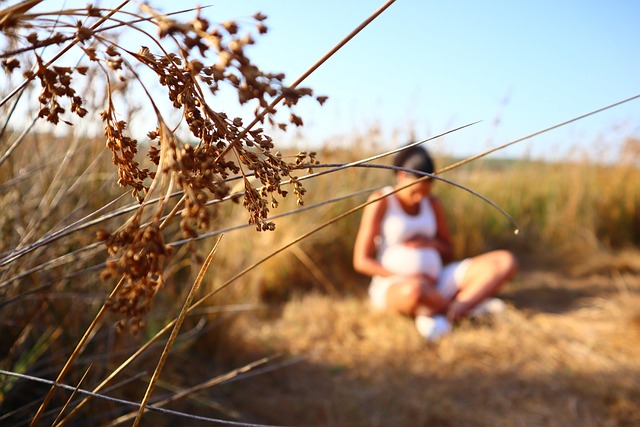“Infertility is tough, but dealing with it after cancer brings even more challenges. I want my fellow Cervivor sisters to know that although the journey can be daunting, it’s also incredibly rewarding. My path to building a family has had its fair share of ups and downs, and I’m here to share my experience to help others prepare for their own journeys.
After my treatment, I was approached by a close friend who offered to be a surrogate for my husband and me. At the time, I was still in graduate school and not yet married, but the timing felt right. We had embryos ready, so why not? I quickly discovered that the process wasn’t going to be straightforward. The hospital where we stored our embryos required approval from their ethics board because they had concerns about my life expectancy post-cancer treatment and my marital status. It was frustrating; if I hadn’t had cancer, I could have conceived without any hurdles. After several meetings with a therapist, we finally received the green light to proceed. Unfortunately, my friend’s attempts to carry our embryos didn’t succeed, which left us heartbroken and led me to explore adoption.
As I dove into research about adoption, I quickly became disheartened by the regulations surrounding it. Different countries and agencies have unique rules, including health restrictions for prospective parents. For instance, China once allowed cancer survivors to adopt after a five-year mark but changed its policy in 2007 to disallow it entirely. In the U.S., adoption laws vary by state, adding another layer of complexity, and we were not willing to wait five years to start a family. So, we circled back to surrogacy.
Days before my wedding in 2010, I learned that my Anti-Mullerian Hormone (AMH) levels indicated I wouldn’t be able to produce viable eggs. It was another blow, but my husband remained supportive, and we kept our faith that we’d become parents one day, even if it meant considering adoption later or using donor eggs for surrogacy.
After getting married, we moved back to my hometown and settled into our new life, but the desire for a baby lingered. I started researching surrogacy options with donor eggs. I stumbled upon the concept of traditional versus gestational surrogacy. Traditional surrogacy involves the surrogate using her own eggs, while gestational surrogacy utilizes eggs from the intended mother or a donor, with IVF required. For someone in my situation, traditional surrogacy seemed to make the most sense.
I created a profile on a platform dedicated to surrogacy discussions, and within minutes, I received a friend request from a potential surrogate. We started exchanging messages, and it felt like we were on a date, getting to know each other. She expressed her reasons for wanting to be a surrogate, and I shared my cancer story, making sure she understood my circumstances.
Although it hadn’t yet been five years, my gynecologic oncologist was willing to support us with a letter stating I was N.E.D. (no evidence of disease) and had a near-normal life expectancy. We decided to work with a domestic adoption agency and completed our home study without waiting the full five years. The agency created an online profile for us, and we were eager to see how many views our profile received each day.
A few months later, we were selected by a birth mother, a wonderful woman who we had the privilege of meeting. Tragically, our baby girl didn’t survive delivery due to a rare condition called Vasa Previa. As a nurse practitioner, I was devastated to learn about this condition, and it left us questioning whether we were meant to be parents. Despite the heartache, our traditional surrogate offered to try again, and we decided to give it one more shot.
This time, we got lucky! Nine months later, our strong-willed son was born, and for a while, we thought he would be our only child. He asked for a sibling often, noting the empty chair at the table or the unoccupied bed when we traveled. Eventually, we realized he was right; something was indeed missing.
After a reflective day at the beach, I felt inspired by a beautiful rainbow—a sign, perhaps, that we should try for another child. Our first attempt with our surrogate was successful, and we welcomed our daughter into the world on March 5th. I didn’t carry her, but I was honored to help deliver her, just as I did with my son. Our family of four was finally complete, and there were no longer empty seats at our table.
While this journey has been anything but easy, I wouldn’t change a thing. I’m incredibly grateful for my children and the people who helped make our family a reality. If you’re facing cancer or infertility, please reach out. I’m here to lend support and share knowledge. Remember, whether it’s surrogacy or adoption, don’t give up on your dreams. Always keep faith over fear.
Krista Lane was diagnosed with cervical cancer in December 2008 at age 25. After treatments left her infertile, she refused to let cancer derail her dream of motherhood. Now, a decade later, she’s living proof that resilience and hope can lead to a fulfilling family life.
For more insights on different aspects of pregnancy and home insemination, you can check out this excellent resource. Also, if you’re considering at-home options for insemination, take a look at this comprehensive kit offered by Make A Mom.
In summary, this heartfelt narrative showcases the challenges and triumphs faced by a cancer survivor on her journey to motherhood, highlighting the importance of resilience, support, and hope in achieving one’s dreams of family.

